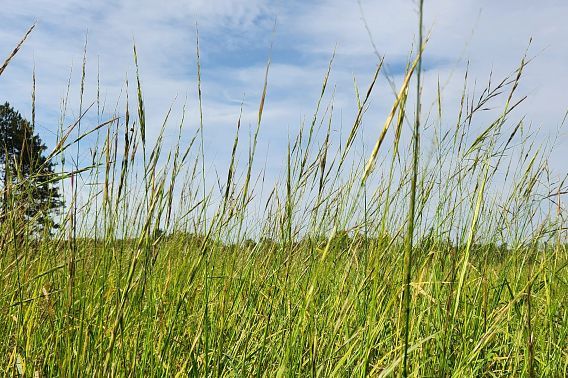Contact: Jason Fleener, DNR Wetland Habitat Specialist
Jason.Fleener@wisconsin.gov or 608-220-9023
2024 Wild Rice Harvest Forecast Shows Below Average Outlook
 Wild rice harvesting is open to all Wisconsin residents and provides the opportunity to forage a natural food source that is unique to the upper Midwest.
Photo credit: Wisconsin DNR
Wild rice harvesting is open to all Wisconsin residents and provides the opportunity to forage a natural food source that is unique to the upper Midwest.
Photo credit: Wisconsin DNR
MADISON, Wis. – The Wisconsin Department of Natural Resources (DNR) today announced that northern Wisconsin’s wild rice crop production is generally below average this year across lakes, flowages and rivers.
"A mild winter in 2023-2024, coupled with heavy storms in mid-June, appears to have set back wild rice production this year throughout much of the northern region of the state," said Brandon Byrne, wild rice biologist with the Great Lakes Indian Fish and Wildlife Commission. "However, most of the lakes that have been reliable for harvesting in recent years should still provide adequate harvest opportunities this year."
The Great Lakes Indian Fish & Wildlife Commission maintains the Off-Reservation Wild Rice Harvest Regulations webpage, which includes helpful information for harvesters and wild rice production conditions for some wild rice waters. With a little research and exploration, harvesters can find good opportunities to harvest wild rice this year.
Wild rice harvesting is open to all Wisconsin residents and provides the opportunity to forage a highly nutritious, natural food source that is unique to the upper Midwest. Wild rice maturity typically ranges from late August through mid-September across the state and varies by waterbody and rice bed.
The DNR stresses the importance of waiting to harvest wild rice until it falls with relatively gentle strokes while “flailing” or “knocking” using ricing sticks. If little to no rice is falling, it is best to try harvesting a few days later. Kernels toward the top of the seed head tend to mature and fall first. Harvest efforts on immature beds inhibit the maturation of the rice kernels, which negatively impacts the harvest experience for others and the long-term sustainability of wild rice production.
The decline in wild rice production has been a notable trend over recent decades. Scientists cite the impacts of climate change as a widespread stressor on the wild rice population. Additional human-induced and natural stressors may be compounding problems at local levels.
"The DNR takes these issues seriously and, in cooperation with tribal nations and other partners, is working on research initiatives to better understand threats to wild rice and develop better strategies for restoring Wisconsin's wild rice populations," said Jason Fleener, DNR wetland habitat specialist.
One such initiative is an active partnership between the DNR, the Menominee, Lac Courte Oreilles and the Great Lakes Indian Fish & Wildlife Commission, funded through an America the Beautiful Challenge grant, to develop and implement an effective management plan for Wisconsin's wild rice resources.
As a reminder to boaters, one of the main threats to wild rice production is improper watercraft use throughout the growing season. Wave activity caused by boats and boating directly through wild rice beds often harm production in wild rice beds. The DNR encourages all watercraft users to educate themselves on how to identify wild rice and modify their boating activities to reduce damage to this treasured Wisconsin resource.
More information on harvesting wild rice and harvest regulations is available on the DNR’s Wild Rice Harvesting webpage.

